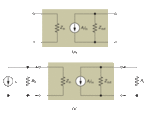Bhuvanesh Nick
Member level 1

"Low input impedence allows one to apply a weak current signal without decrease in its strenght.
High input impedence enables you to apply weak voltage signal without much change in it"
what this exactly mean...i nead an explaination..plzzzz
High input impedence enables you to apply weak voltage signal without much change in it"
what this exactly mean...i nead an explaination..plzzzz



